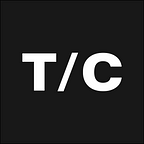Push Vs. Pull: Which marketing style should your brand use?
When it comes to marketing strategies, there are two main routes your brand can go down — push or pull. Both strategies have their benefits, and when deciding which one to use, it’s important to consider the stage your business is at.
Push marketing
Push marketing is where you take your brand directly to your target audience. You push your products and services in front of them, with full control over the timings, frequency and content of your communication.
Since customers aren’t actively looking for your products and services, this is thought of as an intrusive strategy. Push marketing includes ads, posters and pamphlets — in other words, everything your audience doesn’t really want to see.
Pull marketing
In contrast, pull marketing focuses more on bringing customers to you. With pull tactics, the customer is in charge of the timings. When they look for solutions, you’re there with the answer.
This is a much more passive and subtle approach, relying on customers being able to find you when they need you. The focus is more on building brand awareness and encouraging customers to interact with your brand through websites, blogs, social media and SEO.
Push or pull?
While push marketing was once a popular and effective way of getting conversions, consumer behaviours have changed. People no longer buy products just because brands tell them to. Instead, they spend time doing their research, comparing options and reading reviews.
This doesn’t mean that push tactics are obsolete. Looking at where your customers are positioned along the marketing funnel can help decide which would be the best marketing strategy.
Awareness
When customers are at the top of the funnel, they aren’t actively searching for the solutions you offer. This means you need to focus on building awareness.
For businesses just starting out or looking to promote a new product, push tactics are actually more effective in reaching these customers. Decide which types of social media they are more likely to use and run a PPC campaign. This will give you exposure while creating demand, leading to quicker conversions and immediate results.
For more established brands, focus on pull tactics to build awareness and boost your reputation. Create blogs, how-to videos and email campaigns full of valuable content, inspiring trust in your brand, products and services.
Interest
Once people are aware of a problem, they will start actively searching for solutions. Pull tactics will help convince them that your brand is the right choice, and this is where content is key.
As well as helpful blogs, videos and social media posts, you can also use product reviews and case studies to show off previous successes. It’s also a good idea to keep SEO in mind, as this will help make sure your website shows up for all the right people.
Action
When your customers reach the bottom of the funnel, they might need one last little pull towards checkout. They will have invested time and effort into researching what your brand can offer, which means they will be genuinely interested in your products or services. At this stage, a free trial or discount code often works well in getting those conversions.
Retention
Once customers have completed their journey through the funnel, it’s also important to keep them coming back. The content you created to originally pull them in will also encourage brand loyalty. Email campaigns with links to new content will make sure you keep yourself relevant, helping to build a long-lasting relationship.
Choosing the right strategy for your business
When it comes down to it, push and pull marketing work together. Push marketing creates a demand, which pull marketing then fulfils. They each have their own advantages, and which one you choose will depend on whether you want to focus on building awareness or growing conversions.
The first step is to consider where your customers are at in the marketing funnel. Once you know, you can start putting together a plan that makes the most of both push and pull strategies.
